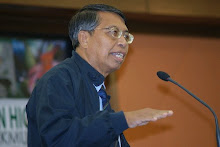In Malaysia unlike other industrialising countries there are not many scientific journals published because journal publication did not attract the Malayan when the British left in 1957, Journal publication was prolific during the colonial days as the British officers were good writers and they had wanted to inform the whole world about the natural assets of Malaya. After Independence the Malayan Nature Society, the Forestry Department and the Agriculture Department were active due to the legacy of the colonial officers of the society and government departments. The University of Malaya, the oldest university in the country did not champion this. Today there are some journals and most of them are published by universities. In the US, Europe and Japan many scientific journals are published by private entreprises, especially by the scientific societies and associations, including academies. After 51 years of Independence, science in Malaysia is 51 years behind when we compare with countries like South Korea, Taiwan, Thailand, etc, to name a few.
The respect for science and technology in Malaysia came very late. For example, the National Biodiversity Policy was only launched in 1998 and that of the National Biotechnology Policy was launched in 2005, and the priority accorded to science was just luke-warm. Hence, this is well reflected by the progress of scientific journal publication. I was told only two Malaysian journals have Impact Factor, a few others were just cited in SCOPUS and SI Thomson, and yet many university administrators are now forcing their staffs to publish in journals with IF, or else perish! What an irony!
These are some of the Malaysian journals that come to my mind:-
a) Journal of Bioscience - Universiti Sains Malaysia. I was told by its Editor USM wants to put this journal on the international circuit
b) Malaysian Journal of Science - Universiti Malaya, irregular
c) Pertanika - Universiti Putra Malaysia
d) Sains Malaysiana - Universiti Kebangsaan Malaysia, the Editor wants to publish 4 numbers a year beginning 2009
e) Malaysian Applied Biology (formerly Malayan Agricultural Journal) - Society of Applied Biology
f) Sandakania - Forestry Department Sabah,
g) Malaysian Nature Journal - Malaysian Nature Society, one of the oldest journal
h) Sabah Nature Journal - Sabah Parks
i) Journal of Forest Science - Forestry Research Institute
j) Folia Malaysiana - Heritage Foundation
h) Malaysian Foresters - Department of Forestry, only recently it was worth reading and subscribing to it.
Some of the problems encountered by the students of Malaysian sciences are:-
- these journals are not up-to-date, they are irregularly published
- the quality of articles is suspect
- many earlier volumes were not to be found in the library
- not all university libraries subscribed to these journals
- many of these journals are not widely circulated
The above problems had hindered the progress of understanding the history of say, Malaysian botany, Malaysian forestry etc. greatly. Take for an example, if I want my students to write an essay on the history of Malaysian botany from the colonial days up to now. How do they begin? Where do they start to look for relevant materials as they have no way to access all these journals from volume 1 up to now. Many students could not trace the earlier publications on Malaysian biology, for instance, in any university library. Not to mention the public libararies either in Kuala Lumpur or states. All these did not augur well for the progress of Malaysian science and technology which has envisioned to utilise S & T eventually to achieve Vision 2020, which is barely 10 years away.
What I have been advocating is an effort to put all these journals within the reach of all readers, especially students via their desk-tops and lap-tops. If these journals are digitised they could access these via their PCs, anywhere they are and anytime of the day. I will be introducing you all what the Universe Digital Library wants to do in the near future.


